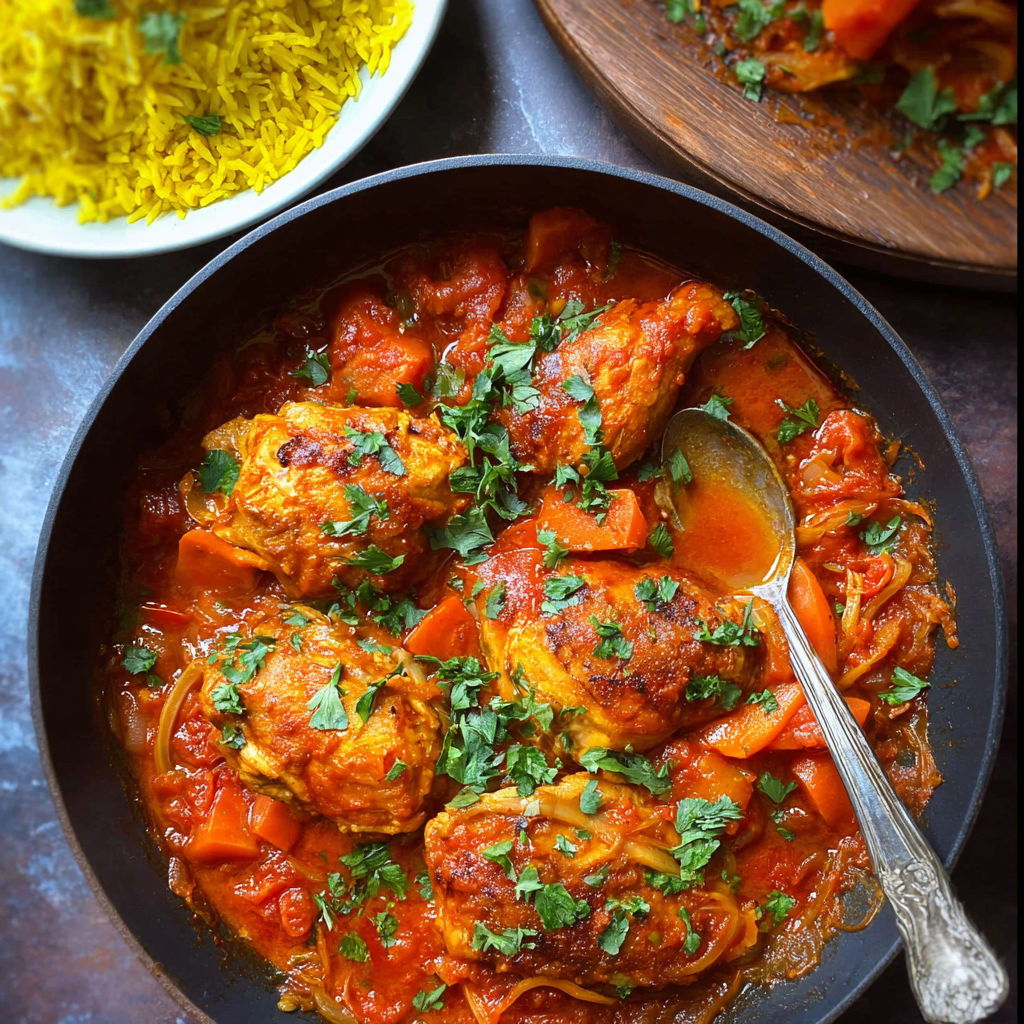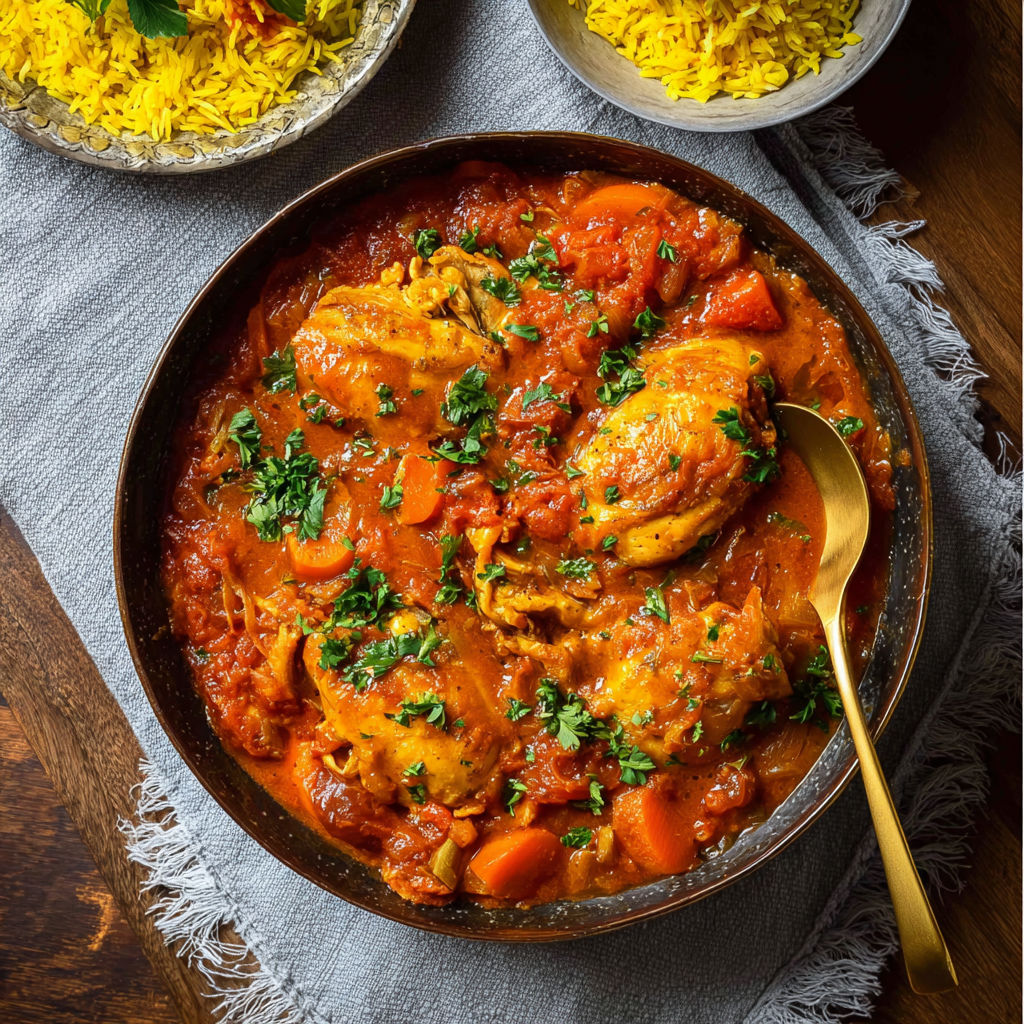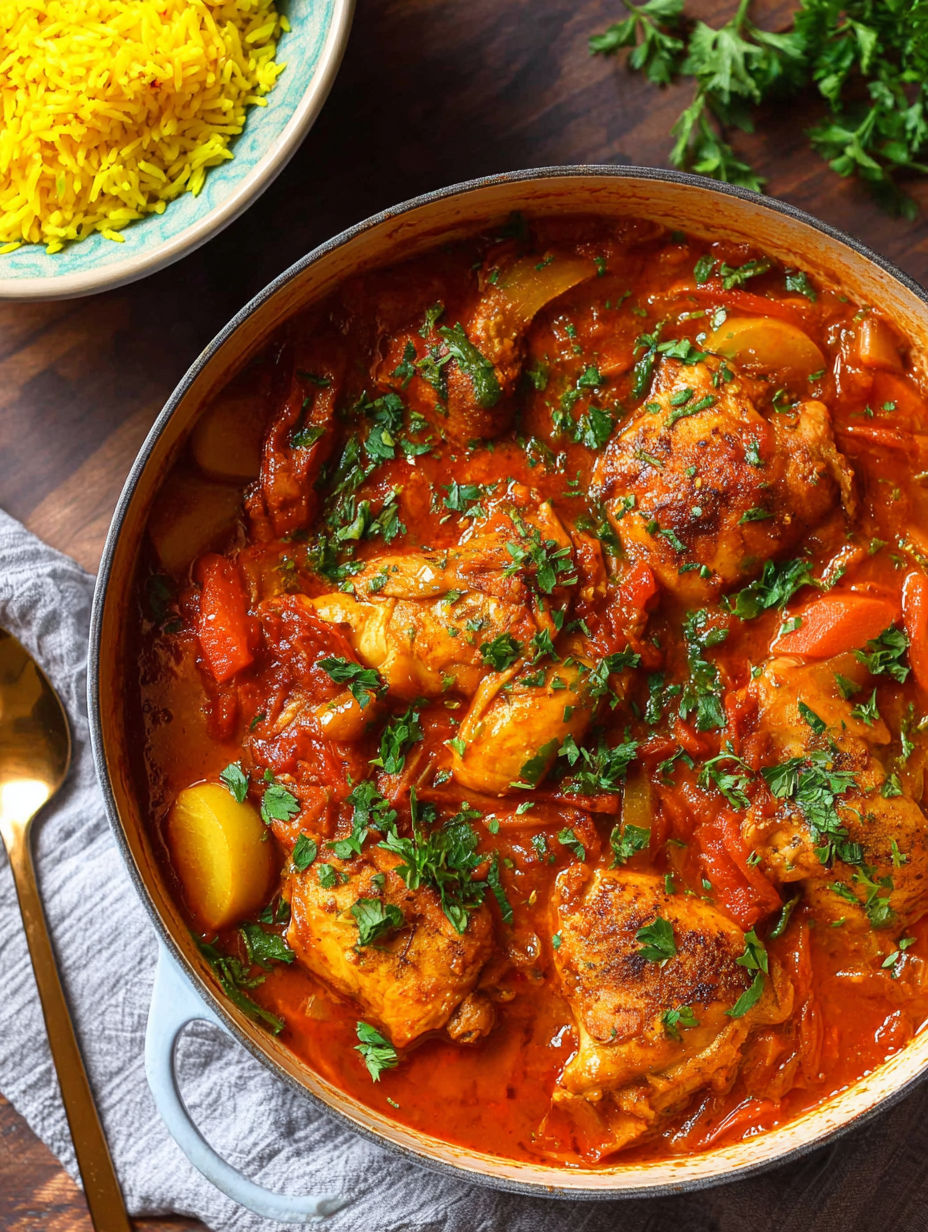 Pin it
Pin it
This fragrant North African chicken dish transforms everyday ingredients into a deeply rich comfort meal that brings exotic flair to your dinner table. The juicy pulled chicken soaked in a spicy tomato blend with sweet dates makes a wonderful mix of tastes that'll make you feel like you're dining in a Moroccan marketplace.
I whipped up this stew one freezing night when I wanted something warm but different from our regular meals. My whole family fell in love with the unique scents filling our home, and now it's our favorite thing to make when friends come over - they always want me to share how I made it.
Ingredients
- Boneless skinless chicken thighs make up the soft, tasty foundation of this stew and don't dry out during long cooking times
- Yellow or white onions add natural sweetness when browned and thickness when mixed into the sauce
- Fire-roasted crushed tomatoes bring a richer, slightly charred taste that works perfectly with the seasonings
- Fresh ginger and garlic create the flavor base that makes this dish stand out
- Ground cumin, cinnamon, paprika, coriander, and turmeric blend together for true Moroccan flavor
- Medjool dates contribute natural sweetness and genuine North African character
- Red wine vinegar cuts through sweetness with a touch of tang
- Chicken stock builds flavor layers and keeps the chicken moist
How To Make Moroccan Chicken Stew
- Blend the sauce base
- Start by throwing roughly cut onion, canned tomatoes, fresh ginger, and garlic into your blender. Mix until totally smooth. This makes the tasty foundation that'll give the whole dish its amazing smell. Don't leave any chunks for the best texture.
- Sear the chicken
- Put plenty of salt and pepper on both sides of your chicken thighs. Warm olive oil in a big pot with a heavy bottom until it's hot. Put in the chicken and cook for 3-4 minutes on each side until it turns golden. This part really builds flavor. Take the chicken out and set it aside.
- Soften the vegetables
- Pour the rest of your oil into the same pot. Toss in sliced onions and cook them for 5 minutes, giving them a stir now and then. Add your chopped carrots and keep cooking for 5 more minutes until onions look clear. These veggies add nice texture and sweetness.
- Bloom the spices
- Put all your ground spices in the pot with the veggies. Cook them gently on low heat for a full minute, always stirring. This wakes up the oils in the spices, making them smell and taste stronger. Just watch they don't burn.
- Simmer the stew
- Pour in your blended tomato mix and let it bubble for 3-5 minutes. Put the seared chicken back in along with stock, vinegar, and sugar. Let it start to simmer, cover it, and cook for at least 30 minutes. The longer it cooks, the better the flavors mix together.
- Shred and finish
- Take the chicken out and pull it apart using two forks. Put the shredded chicken back in along with chopped dates. Mix everything well. The dates will get a bit soft in the hot stew, letting out their sweetness. Add fresh parsley on top before you serve it.
The cinnamon is my hidden trick in this dish. Most folks only use cinnamon for desserts, but in Moroccan cooking, it adds amazing richness to savory stews. My grandma always told me that getting authentic flavor means letting the cinnamon slowly infuse during a long, gentle simmer.
Serving Suggestions
This adaptable stew goes great with many sides. Spoon it over light couscous to soak up all that tasty sauce, or grab some crusty bread for a more casual meal. For a complete Moroccan experience, add a simple cucumber and tomato mix with a splash of lemon juice and olive oil. The cool, crisp salad balances out the warm, rich stew perfectly.
 Pin it
Pin it
Storage Tips
Keep any leftover stew in a sealed container in your fridge for up to 4 days. The taste actually gets better over time, so it's perfect for planning meals ahead. If you want to keep it longer, freeze portions in freezer containers for up to 3 months. Let it thaw in the fridge overnight before warming it slowly on the stove, adding a splash of water or broth if the sauce seems too thick.
Easy Substitutions
Though the recipe calls for chicken thighs, you can use chicken breasts if you want, but they might not be as juicy. If you don't eat meat, swap the chicken for chickpeas and use veggie stock for a tasty plant-based option. Can't find dates? Try dried apricots or prunes instead - they'll still give you that classic sweet-savory mix that makes Moroccan food so special.
Historical Context
This stew takes its cues from traditional Moroccan tagines, slow-cooked meals named after the cone-shaped clay pots they're usually made in. Moroccan cooking is famous for mixing sweet and savory flavors, with influences from Berber, Arabic, Mediterranean, and French food traditions. The combo of warm spices, dried fruits, and meat is typical of North African dishes that have changed over hundreds of years as cultures traded along ancient routes.
 Pin it
Pin it
Frequently Asked Questions
- → What goes well with Moroccan chicken stew?
Pair it with fluffy couscous, basmati rice, or quinoa. Add naan or pita bread to soak up the sauce. A minty cucumber salad with a lemon dressing makes a refreshing side.
- → Can I prepare this ahead of time?
Definitely! The flavors get better after resting. Keep it chilled in an airtight container for 3 days or freeze up to 3 months. Reheat gently on low heat, adding chicken stock if needed to loosen the sauce.
- → Are chicken breasts okay instead of thighs?
Yes, but since chicken breasts cook quicker, cut simmering time to 20-25 minutes to avoid drying out. Add a little olive oil for extra moisture, as breasts are leaner than thighs.
- → What if I don’t have all the spices?
You can use 2-3 tablespoons of a Moroccan spice mix like Ras el Hanout. In a pinch, just use cinnamon and cumin for a simpler but still delicious flavor.
- → How can I make this vegetarian?
Swap the chicken for chickpeas (use two cans, drained and rinsed). Use veggie broth instead of chicken stock. Toss in some butternut squash or sweet potatoes for added heartiness and flavor.
- → What can replace dates in this dish?
Dried apricots, prunes, or golden raisins are great substitutes. If you’re not into sweet, skip them and adjust the dish's sweetness by reducing honey or sugar. It’ll still have a tasty balance.
